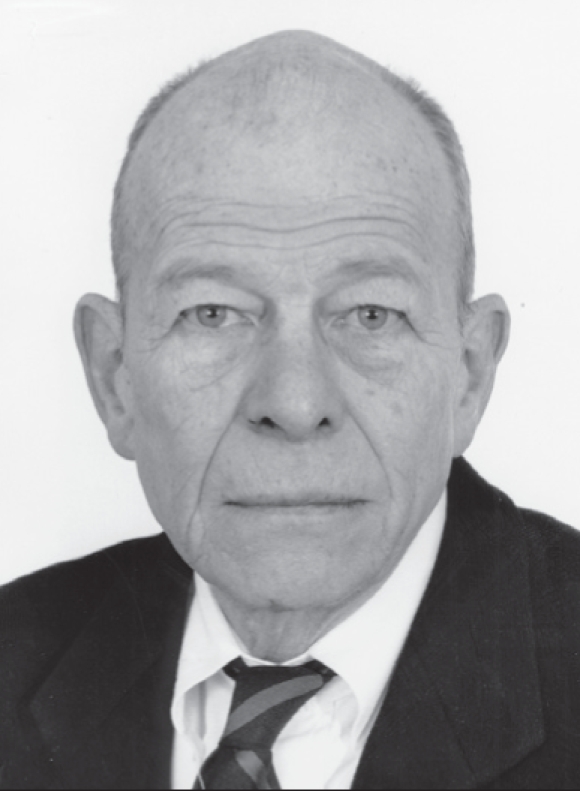In the current issue of the Canadian Respiratory Journal, Lemiere et al (1) (pages 61–66) review outcomes of asthma due to sensitization to substances encountered in the workplace after removal from exposure. The study is unusual in that it examines more than simple clinical variables such as symptoms and lung function, but attempts to determine potential pathogeneses of the problem. It must be noted that the authors are part of one of the two or three Canadian groups that are world leaders in this field – a group that specializes in documenting work-place asthma with specific inhalation challenges using the suspect antigens. They have previously published studies on clinical outcomes after withdrawal from the workplace (2,3).

Nick R Anthonisen
Lemiere et al followed 24 patients with documented occupational asthma due to sensitization to a number of workplace allergens for four years after exposure cessation. They serially measured lung function (which was essentially normal), methacholine response, sputum eosinophils, and expression of the cytokines interleukin-5 and interferon gamma.
In the group as a whole, the only real changes that were seen were a decrease in sputum eosinophils and in the expression of both cytokines (which was not significant because of scatter). The clinical data – little change in lung function or methacholine sensitivity – had been observed before, but what is new and different is that patients with initial sputum eosinophilia probably differed from those without this finding.
Apparently, satisfactory sputum cell counts were available for 22 patients. Of these, seven patients had an initial count of less than 2% eosinophils and 15 had initial counts of more than 2%.
In the latter group, the eosinophil count decreased, as did methacholine sensitivity, in spite of decreased use of inhaled corticosteroids; these patients apparently got better. On the other hand, the seven patients without initial sputum eosinophilia did not do so well, their forced expiratory volume in 1 s declined and their methacholine sensitivity did not. The two groups did not differ at baseline in terms of demographics, atopy, exposure or initial inhaled corticosteroid therapy. Although Lemiere et al recognized the small group size, the results are intriguing.
Lemiere and others of the Hôpital du Sacré-Coeur de Montréal (Montreal, Quebec) group have been converted to the gospel according to Dr Fred Hargreave of McMaster University (Hamilton, Ontario), which states that sputum eosinophils are an important clinical variable in asthma (4,5). The findings of the Lemiere et al study certainly support this thesis, although the Hargreave group has chiefly related eosinophils to steroid responsiveness, which may be a different phenomenon from reversibility of occupational asthma. Indeed, the results of the Lemiere et al (1) study may imply that the absence of sputum eosinophilia signifies a lack of reversibility in general – a hypothesis that has been entertained by others (6,7). The idea that asthma possibly consists of several phenotypes is also not new, and sputum eosinophilia may be an important marker for one such difference.
REFERENCES
- 1.Lemiere C, Chaboillez S, Welam M, Maghni K. Outcome of occupational asthma after removal from exposure: A follow-up study. Can Respir J. 2010;17:61–6. doi: 10.1155/2010/509807. [DOI] [PMC free article] [PubMed] [Google Scholar]
- 2.Perfetti L, Cartier A, Ghezzo H, Gautrin D, Malo J-L. Follow-up of occupational asthma after removal from or diminution of exposure to the responsible agent: Relevance of the length of the interval from cessation of exposure. Chest. 1998;114:398–403. doi: 10.1378/chest.114.2.398. [DOI] [PubMed] [Google Scholar]
- 3.Maghni K, Lemeire C, Ghezzo H, Yuquan W, Malo J-L. Airway inflammation after cessation of exposure to agents causing occupational asthma. Am J Respir Crit Care Med. 2004;169:367–72. doi: 10.1164/rccm.200309-1238OC. [DOI] [PubMed] [Google Scholar]
- 4.Pin I, Gibson P, Kolendowicz F, et al. Use of induced sputum cell counts to investigate airway inflammation in asthma. Thorax. 1992;47:25–9. doi: 10.1136/thx.47.1.25. [DOI] [PMC free article] [PubMed] [Google Scholar]
- 5.Pizzichini E, Pizzachini M, Efthiniadis A, Dolovich J, Hargreave FE. Measuring airway inflammation in asthma: Eosinophils and cationic protein in induced sputum compared with peripheral blood. J Allergy Clin Immunol. 1997;99:539–44. doi: 10.1016/s0091-6749(97)70082-4. [DOI] [PubMed] [Google Scholar]
- 6.Pavord I, Brighting C, Woltmann G, Wardlaw A. Non-eosinophilic corticosteroid unresponsive asthma. The Lancet. 1999;353:2213–4. doi: 10.1016/S0140-6736(99)01813-9. [DOI] [PubMed] [Google Scholar]
- 7.Woddruff PG, Khashayar R, Lazarus SC, et al. Relationship between airway inflammation hyperresponsiveness, and obstruction in asthma. J Allergy Clin Immunol. 2002;109:410–8. doi: 10.1067/mai.2001.119411. [DOI] [PubMed] [Google Scholar]


